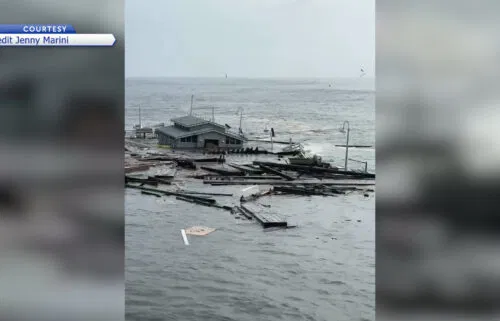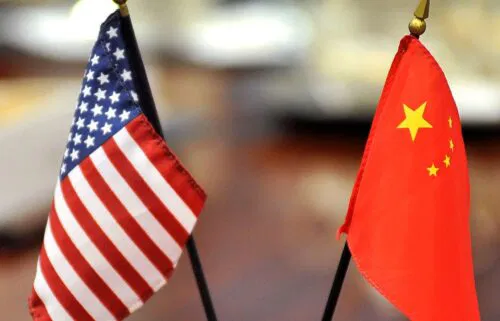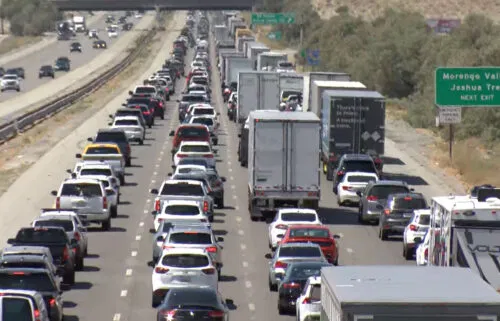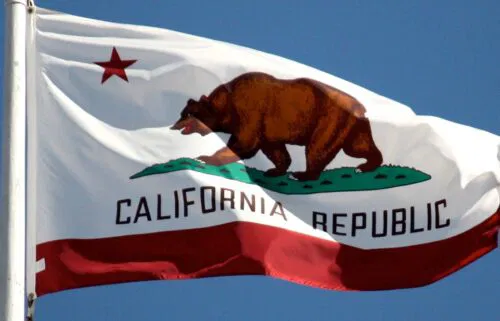Pride parades march on with new urgency across US
By BOBBY CAINA CALVAN
Associated Press
NEW YORK (AP) — Pride parades kicked off in New York City and around the country Sunday with glittering confetti, cheering crowds, fluttering rainbow flags and newfound fears about losing freedoms won through decades of activism.
The annual marches in New York, San Francisco, Chicago and elsewhere took place just two days after one conservative justice on the Supreme Court signaled, in a ruling on abortion, that the court should reconsider the right to same-sex marriage recognized in 2015.
“We’re here to make a statement,” said 31-year-old Mercedes Sharpe, who traveled to Manhattan from Massachusetts. “I think it’s about making a point, rather than all the other years like how we normally celebrate it. This one’s really gonna stand out. I think a lot of angry people, not even just women, angry men, angry women.”
Thousands of people — many decked in pride colors — lined the parade route through Manhattan, cheering as floats and marchers passed by. Organizers announced this weekend that a Planned Parenthood contingent would be at the front of the parade.
In Chicago, Mayor Lori Lightfoot called the top court ruling a “momentary setback” and said Sunday’s events were “an opportunity for us to not only celebrate Pride, but be resolved for the fight.”
“We will not live in a world, not in my city, where our rights are taken from us or rolled back,” said Lightfoot, Chicago’s first openly gay mayor, and the first Black woman to hold the office.
In San Francisco, some marchers and spectators held signs condemning the court’s abortion ruling. U.S. House Speaker Nancy Pelosi, who rode in a convertible holding a gavel and a rainbow fan, said the large turnout was an acknowledgement that Americans support gay rights.
“Even in spite of the majority on the court that’s anti our Constitution, our country knows and loves our LGBTQI+ community,” she told KGO-TV.
The warning shot from the nation’s top court came after a year of legislative defeats for the LGBTQ community, including the passage of laws in some states limiting the discussion of sexual orientation or gender identity with children.
As anti-gay sentiments resurface, some are pushing for the parades to return to their roots — less blocks-long street parties, more overtly civil rights marches.
“It has gone from being a statement of advocacy and protest to being much more of a celebration of gay life,” Sean Clarkin, 67, said of New York City’s annual parade while enjoying a drink recently at Julius’, one of the oldest gay bars in Manhattan’s Greenwich Village.
As he remembers things, the parade was once about defiance and pushing against an oppressive mainstream that saw gays, lesbians and transgender people as unworthy outsiders.
“As satisfying and empowering as it may be to now be accepted by the mainstream,” Clarkin said, “there was also something energizing and wonderful about being on the outside looking in.”
New York’s first Pride March, then called the Christopher Street Liberation Day March, was held in 1970 to mark the first anniversary of the Stonewall rebellion, a spontaneous street uprising triggered by a police raid on a gay bar in Manhattan.
San Francisco’s first march was in 1972 and had been held every year since, except during the last two years of the COVID-19 pandemic.
Celebrations are now global, taking place throughout the year in multiple countries, with many of the biggest parades taking place in June. One of the world’s largest, in Sao Paulo, Brazil, was held June 19.
In the United States, this year’s celebrations take place amid a potential crisis.
In a Supreme Court ruling Friday striking down the right to abortion, Justice Clarence Thomas said in a concurring opinion that the court should also reconsider its 2015 decision legalizing same-sex marriage and a 2003 decision striking down laws criminalizing gay sex.
New York City parade spectator Jackie English said she and her fiancee Dana had yet to set a wedding date, but have a new sense of urgency.
“Now we feel a bit pressured,” she said, adding they might “jump the gun a little sooner. Because, what if that right gets taken away from us?”
More than a dozen states have recently enacted laws that go against the interests of LGBTQ communities, including a law barring any mention of sexual orientation in school curricula in Florida and threats of prosecution for parents who allow their children to get gender-affirming care in Texas.
Several states have put laws in place prohibiting transgender athletes from participating in team sports that coincide with the gender in which they identify.
According to an Anti-Defamation League survey released earlier this week, members of LGBTQ communities were more likely than any other group to experience harassment. Two-thirds of respondents said they have been harassed, a little more than half of whom said the harassment was a result of their sexual orientation.
In recent years, schisms over how to commemorate Stonewall have opened, spawning splinter groups events intended to be more protest-oriented.
In New York City, the Queer Liberation March takes place at the same time as the traditional parade, billing itself as the “antidote to the corporate-infused, police-entangled, politician-heavy Parades that now dominate pride celebrations.”
San Francisco’s parade was marked by the return of uniformed police, who were banned in 2020 after a 2019 confrontation with protesters who staged a parade-stopping sit-in. Critics accused them of using excessive force. On Sunday, San Francisco Police Chief William Scott, in full dress uniform, passed out small rainbow pride flags to spectators.
Despite the criticism of growing commercialism, a strong streak of activism was apparent among attendees this year.
“The recent overturning of Roe v. Wade has caused a very strong uproar about what went down,” said Dean Jigarjian, 22, who crossed the river from New Jersey with his girlfriend to take part in the New York City parade. “So as you can see here, the crowd seems to be very energized about what could be next.”
___
Associated Press writers Sara Burnett and Robert Jablon contributed from Chicago and Los Angeles, respectively.



